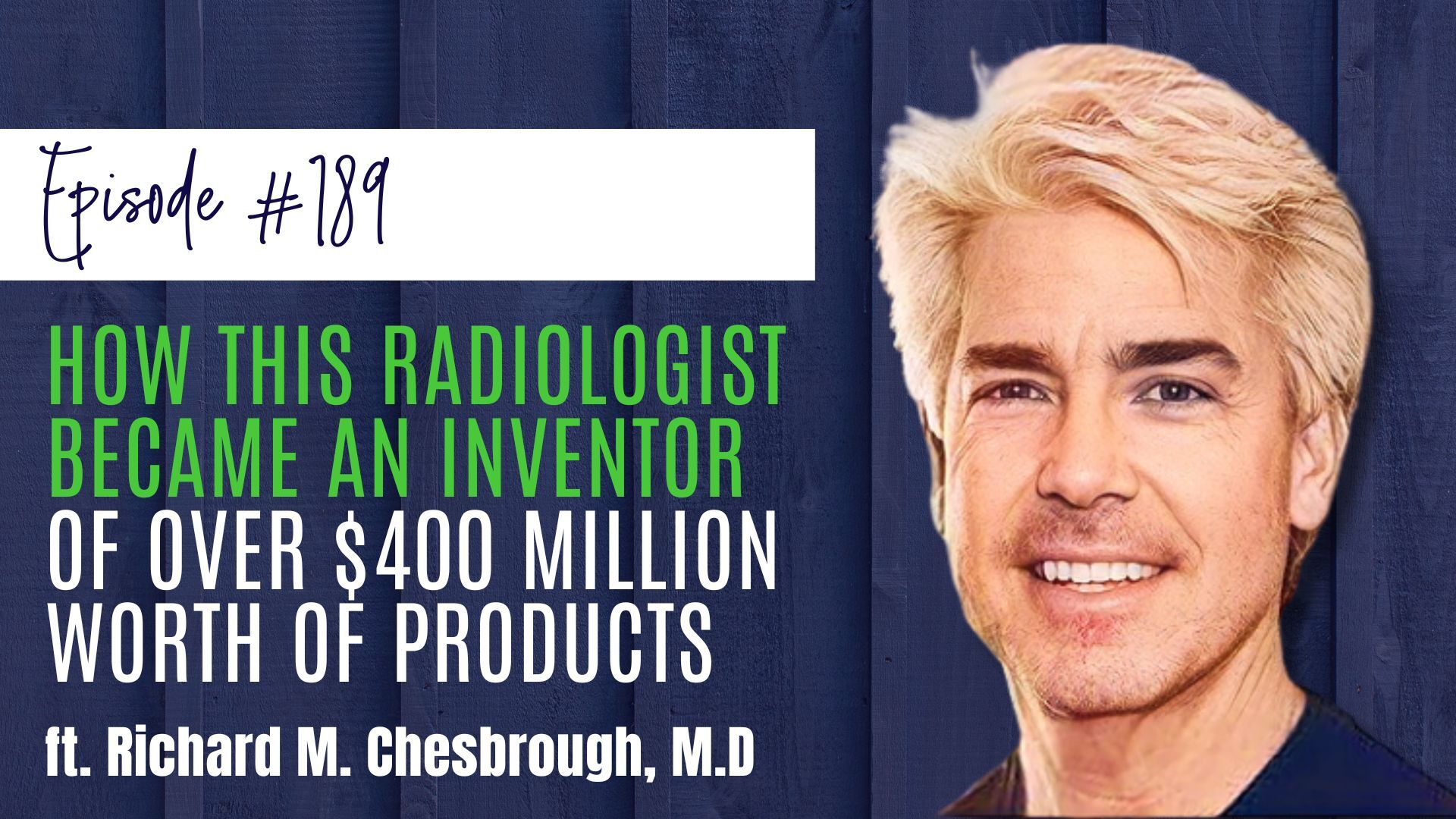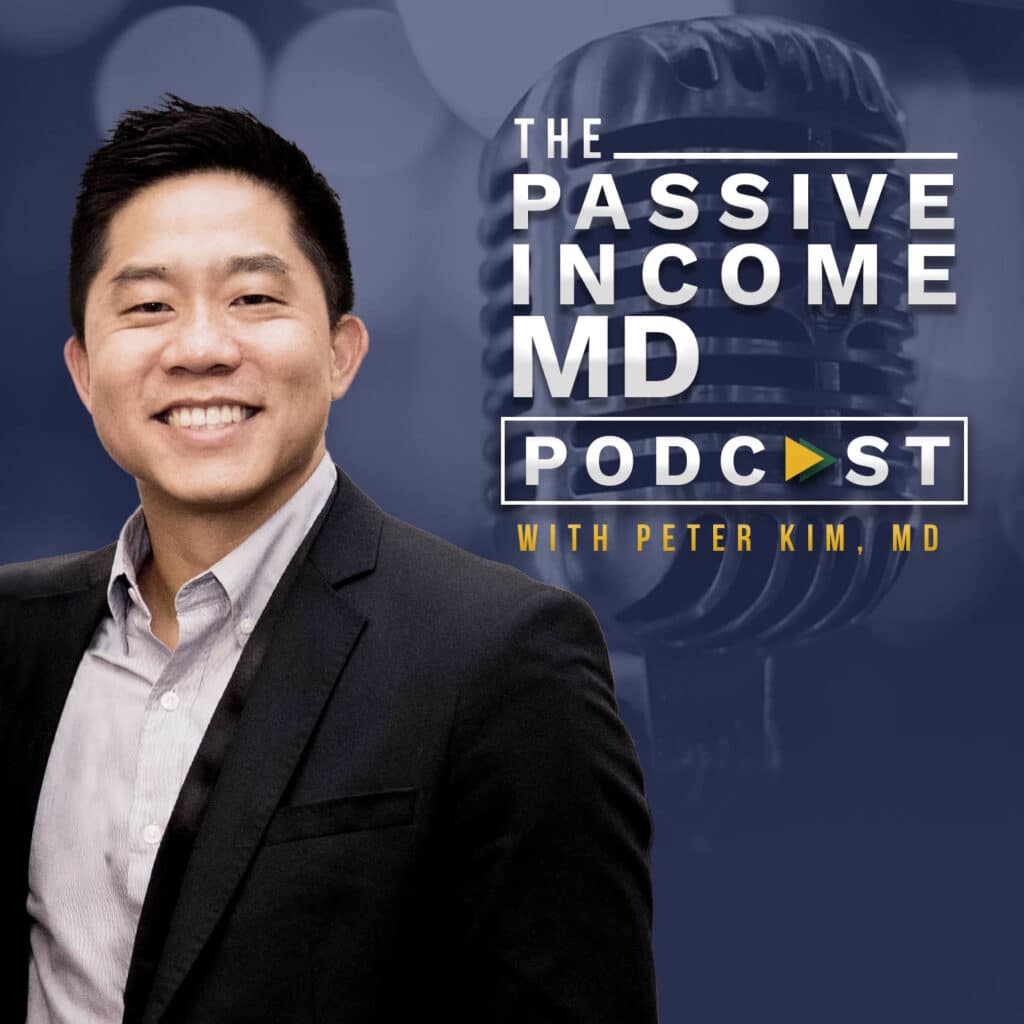
#189 How This Radiologist Became an Inventor of Over $400 Million Worth of Products ft. Richard M. Chesbrough, M.D
In this episode, Dr. Peter Kim interviews Dr. Richard M. Chesbrough, a retired radiologist with over 30 patents who has generated over $450 million in product sales from his inventions. Gain insights on how to get started with inventing, making sense of it financially, facing rejections, and the potential doctors have to explore inventing as a side hustle.
Are you looking for a community to encourage you as you begin, or want to accelerate your business to the next level? Then join thousands of physicians who share the same journey of creating their ideal lives through multiple streams of income by joining us in our Facebook communities such as Passive Income Docs and Passive Income MD.
Episode Highlights
Now, let’s look at what we discussed in this episode:
- Dr. Richard: Physician Inventor
- Inventions: Where to Begin
- How Financially Lucrative Inventions Can Be
- Facing Rejections and Downfalls
- Potential for Doctors to Become Inventors
Here’s a breakdown of how this episode unfolds.
Episode Breakdown
Becoming a Physician Inventor
Peter opens by introducing Dr. Richard, a retired radiologist with over 30 patents, who has generated over $450 million in product sales from his inventions.
Richard shares his successful career and transition to full-time invention after retiring at age 57. His inventions continue to generate significant revenue, showcasing the potential for physicians to innovate and create multiple streams of income.
“Dr. Richard Chesbrough is a physician inventor and a retired radiologist with over 30 patents. The lifetime value of his product sales from what he’s invented is now over $450 million.” — Peter Kim, MD.
Inventions: Where To Begin
Dr. Peter continues by asking Richard to share the story of what prompted him to begin his journey of inventions.
Dr. Chesbrough shares that it all began in the 90s when he invented a suction cup fastener for shower caddies. He spent $20,000 on a patent but failed to find a market for his invention. Later, while doing breast imaging, he developed an easy-to-use clip for marking the side of biopsies. The ultra clip became a big seller and launched him on the path to medical inventions.
During those times he learned the importance of finding a market before investing in a patent and recommends that physicians who want to become inventors should first identify recurring problems in their field and solve them.
He advises applying for a provisional patent, which allows one year of patent pending status, during which time one can pitch the idea to companies without spending money on a formal patent. He suggests targeting small and mid-sized medical device companies and finding similar products to determine the market and potential price. A non-disclosure agreement can protect the idea during negotiations.
Richard sees inventing as a great side hustle for physicians that allows them to be creative while keeping their day job.
“This is something that any physician can do. And it’s certainly something that allows you to be creative but keep your day job and you don’t have to risk losing your house” — Richard Chesbrough, MD.
How Financially Lucrative Inventions Can Be
Peter asks Richard to elaborate on the financial benefits that come with being a physician inventor and poses the question of why such a pursuit would seem valuable to physicians.
In response, Dr. Richard discusses a low-cost approach to patenting and licensing inventions, emphasizing the importance of thorough research and targeting small and mid-sized companies. He highlights the potential impact on a physician’s income, citing his personal experience of earning royalties from licensed inventions. Richard encourages a mindset of problem-solving and invention, noting that while most inventions may not yield significant returns, even an average invention could earn a physician 10,000 to 30,000 a year in royalties for at least 20 years.
He stresses that execution is the hard part, and partnering with a company for licensing can help with the heavy lifting.
“Peter, you’ve got a new idea every other week. Most inventors are like that. It’s a mindset where you’re looking at problems and instead of complaining about the problem, the inventors think, ‘Okay, it’s a problem, how do I solve it?’” — Richard Chesbrough, MD.
Facing Rejections and Downfalls
Dr. Richard shares the persistence required in the invention process, drawing parallels to dealing with rejection in medical school and dating.
He emphasizes the importance of seeking feedback from colleagues and approaching multiple companies, noting that small and mid-sized companies are often receptive to new ideas. Dr. Chesbrough advises thorough preparation, including market research and projections, and suggests using online platforms like Fiverr for professional drawings.
He encourages future physician inventors to embrace the learning process and the likelihood of having multiple ideas in the future.
“If you’re having this problem on a regular basis, and you’ve come up with something that really would help you, and you talk to 5 or 10 colleagues in your same specialty, and they say that would be a good idea… Then that gives you a little bit more of a reason to persist. ” — Richard Chesbrough, MD.
Potential for Doctors to Become Inventors
Peter concludes by asking Richard to share his thoughts on the potential of doctors like him as physician inventors.
Dr. Richard focuses on the aptitude for physicians to engage in side businesses or non-clinical careers, emphasizing that anyone can pursue low-cost licensing opportunities while maintaining their primary medical role. He highlights the problem-solving nature of physicians and encourages persistence in pitching ideas to companies. Richard also mentions a low-cost company, InventRight.com, which offers free seminars on licensing and idea development. He highlights the importance of persistence and learning from each pitch, as well as the likelihood of finding a receptive company.
Lastly, Dr. Richard advises against getting bogged down by the cost of patents when pursuing inventions, emphasizing that there are alternative ways to invent without needing a patent. He shares his own successful experience of licensing and selling medical devices without obtaining a patent, highlighting recurring sales and profitability without patent protection.
Chesbrough encourages inventors not to let the patenting process deter them from pursuing their ideas.
“I did realize that having some side businesses was not a bad way to go, and I had interests and things that I wanted to develop.” — Richard Chesbrough, MD.




